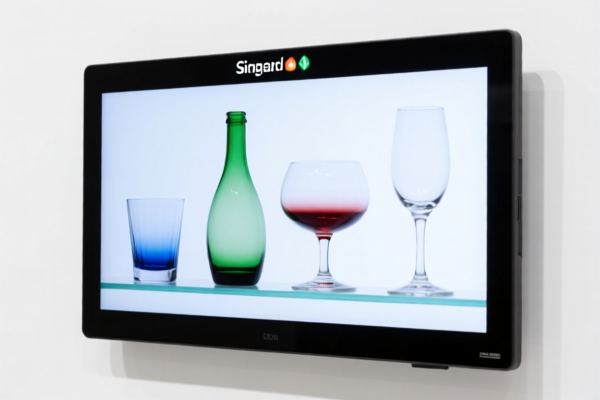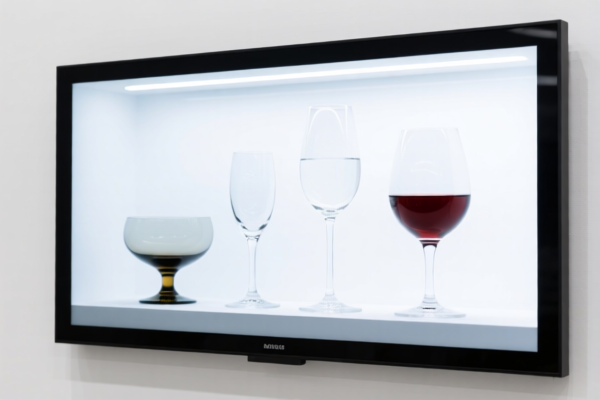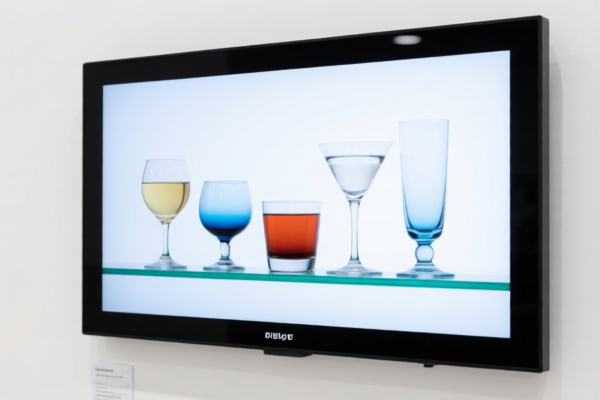| HS Code | Official Doc | Tariff Rate | Origin | Destination | Effective Date |
|---|---|---|---|---|---|
| 8524111000 | Doc | 45.0% | CN | US | 2025-05-12 |
| 8524120000 | Doc | 45.0% | CN | US | 2025-05-12 |
| 8529905500 | Doc | 55.0% | CN | US | 2025-05-12 |
| 8529900500 | Doc | 55.0% | CN | US | 2025-05-12 |
| 8542900000 | Doc | 70.0% | CN | US | 2025-05-12 |
| 9023000000 | Doc | 37.5% | CN | US | 2025-05-12 |
| 9031497000 | Doc | 55.0% | CN | US | 2025-05-12 |
| 9031410040 | Doc | 55.0% | CN | US | 2025-05-12 |




Electronic Display Screen
An electronic display screen is a visual output device that presents information in a visual format. These screens utilize various technologies to render images, text, video, and other graphical content. They are integral components in a wide array of devices, from smartphones and televisions to computer monitors and digital signage.
Materials
The materials used in electronic display screens vary significantly depending on the technology employed. Common materials include:
- Glass/Acrylic: Often used as a substrate to provide a protective layer and structural support.
- Liquid Crystals: Used in LCD screens to modulate light transmission.
- Organic Light-Emitting Diodes (OLEDs): Used in OLED screens to emit light directly.
- Silicon: Used in both LCD and OLED backplanes, and in microLED displays.
- Phosphors: Used in older CRT and some LCD backlights to generate light.
- Polarizing Films: Used in LCDs to control the direction of light.
- Thin-Film Transistors (TFTs): Used in LCDs to control individual pixels.
- Metals (e.g., Indium Tin Oxide - ITO): Used as transparent conductive electrodes.
Purpose
The primary purpose of an electronic display screen is to present visual information to a user. This information can be:
- Text: For reading documents, messages, or user interfaces.
- Images: For viewing photographs, graphics, or illustrations.
- Video: For watching movies, TV shows, or streaming content.
- Graphical User Interfaces (GUIs): For interacting with software applications.
- Data Visualization: For presenting charts, graphs, and other data representations.
Function
Electronic display screens function by converting electrical signals into visible light. This conversion process differs based on the underlying technology:
- LCD (Liquid Crystal Display): Backlights illuminate liquid crystals, which twist or untwist to control the amount of light passing through, creating images. Requires a separate backlight source.
- LED (Light-Emitting Diode): LEDs emit light when an electric current passes through them. Can be used as backlights for LCDs or as individual pixels in LED displays.
- OLED (Organic Light-Emitting Diode): Organic compounds emit light when an electric current is applied. Each pixel emits its own light, resulting in high contrast and vibrant colors.
- MicroLED: Arrays of microscopic LEDs create images. Similar to OLED in self-emission but with greater brightness and durability.
- Plasma: Small cells filled with gas emit light when excited by an electric current. (Less common now).
Usage Scenarios
Electronic display screens are found in a vast range of applications:
- Consumer Electronics: Televisions, smartphones, tablets, laptops, smartwatches, digital cameras.
- Computer Technology: Computer monitors, projectors, touch screen interfaces.
- Automotive: Navigation systems, infotainment displays, dashboard instrumentation.
- Medical Devices: Patient monitoring systems, imaging equipment.
- Industrial Applications: Control panels, machine interfaces, digital signage.
- Digital Signage: Advertising displays, information kiosks, public transportation systems.
- Gaming: Monitors and handheld gaming devices.
Common Types
- LCD (Liquid Crystal Display): The most prevalent type, known for its affordability. Subtypes include TN (Twisted Nematic), IPS (In-Plane Switching), and VA (Vertical Alignment), each offering different viewing angles and color reproduction.
- LED-backlit LCD: LCDs using LEDs as the backlight source. Offers improved brightness and energy efficiency compared to older CCFL-backlit LCDs.
- OLED (Organic Light-Emitting Diode): Offers superior contrast, color accuracy, and viewing angles, but can be more expensive. Subtypes include PMOLED (Passive-Matrix OLED) and AMOLED (Active-Matrix OLED).
- MicroLED: Emerging technology offering high brightness, contrast, and durability. Still relatively expensive.
- Plasma Display Panels (PDP): Larger screens, high contrast, but less energy efficient and heavier than LCDs. Largely replaced by LCD and OLED.
- E-paper (Electronic Paper): Low power consumption, good readability in sunlight, commonly used in e-readers.
Electronic display screens can be categorized based on their technology and components. The following HS codes are relevant, based on the provided information:
- 8524111000: This HS code covers flat panel display modules, with or without touch-sensitive screens, without drivers or control circuits, specifically those made of liquid crystals. These are other than those for articles of subheadings 8528.59, 8528.69, 8528.72 and 8528.73. The total tax rate is 45.0%, comprised of a 0.0% base tariff and a 25.0% additional tariff, increasing to 20.0% after April 2, 2025.
- 8524120000: This HS code also covers flat panel display modules, with or without touch-sensitive screens, without drivers or control circuits, but specifically those made of organic light-emitting diodes (OLED). The total tax rate is 45.0%, comprised of a 0.0% base tariff and a 25.0% additional tariff, increasing to 20.0% after April 2, 2025.
- 8529905500: This HS code covers parts suitable for use solely or principally with the apparatus of headings 8524 to 8528, specifically flat panel screen assemblies for the apparatus of subheadings 8528.59.15, 8528.59.23, 8528.59.25, 8528.69.35, 8525.69.40, 8528.69.45, 8528.69.50, 8528.72.62, 8528.72.64, 8528.72.68 and 8528.72.72. The total tax rate is 55.0%, comprised of a 0.0% base tariff and a 25.0% additional tariff, increasing to 30.0% after April 2, 2025.
Regarding HS code 8529905500, please note that it specifically applies to flat panel screen assemblies for certain apparatus subheadings. Ensure the screen assembly matches these listed subheadings for correct classification.
Customer Reviews
I found the HS Code 3925 explanation very clear and helpful. It saved me a lot of time when preparing my export documentation for plastic doors.
The tariff rates for the US and EU were very useful. I was able to make an informed decision about where to export my plastic doors.
This is the best site I’ve found for HS Code 3925. The information on plastic doors and their tariff rates is spot-on and very easy to understand.
The page provided good details about the tariff rates for plastic builder’s doors, but I wish there were more countries listed for comparison.
I was impressed by the clarity of the information on HS Code 3925. It made exporting plastic doors much easier for me as a new trader.